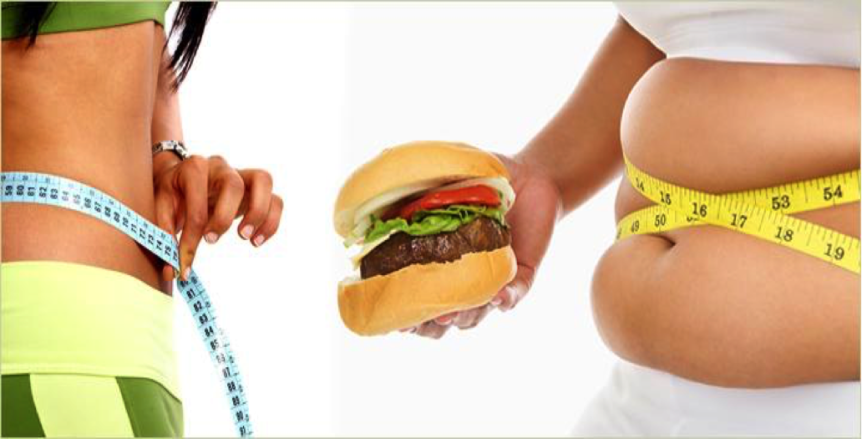Have you ever had a the feeling, as you looked at the bathroom scale or tired to button your jeans, that there was something wrong with your body, some stubborn disorder that simply refused to let you shed your excess weight?
If you’ve tried in vain to lose weight, if you’ve fallen off every diet you’ve ever begun, if you’ve found your healthy intentions were sabotaged by sugar cravings and starch binges, you haven’t simply been failing or indulging yourself. You’re not deficient in will power or discipline. You’re not weak or helpless or out of control. You are simply suffering from a chemical imbalance, a chemical imbalance you can correct by cutting out the wrong foods and beginning to eat the right ones.
Our bodies are designed to maintain a healthy weight, without any extra effort on our part. When our bodies are working properly, we eat what we want, and if we inadvertently gain a few pounds, the leptin in our system works to suppress our appetite, increase our metabolism, and reestablish our original weight. This is the mechanism that enables people to stay slim.
The problem comes when this natural ability is disrupted most often by a condition known as inflammation. Inflammation contributes too many conditions: allergies, asthma, arthritis, colitis and yes, obesity.
Inflammations triggers leptin resistance, which in turn contributes to a sluggish metabolism, unchecked craving, and eventually, unwanted pounds. As a result you gain weight. Then the excess fat creates more inflammation, making the extra weight unusually difficult to lose. That is why, once again weight gain often continues. The weight itself is worsening the condition that caused you to put on weight in the first place. Fat cells are like endocrine organs producing hormones like leptin, estrogen and adiponetin another fat regulating hormone.
Adiponectin is another key player in the fat-regulation system. Like leptin adiponectin is only produced by the fat cells. Adiponectin helps your muscles turn fat into energy more efficiently. High levels of adipionectin also fight inflammation. They help increase insulin sensitivity, which in turn aids in prevention of diabetes. Adiponectn also appears to protect the blood vessels, preventing hypertension and heart disease. Like leptin adiponcetin suppresses appetite. Unfortunately, adiponectin is in short supply when you are overweight. By simple losing weight you can boost your levels of adiponectin this key hormone in fat resistance. Thus, higher levels of adiponectin are associated with a lower percentage of body fat, lower weight and inflammation.
Fat cells are not useless when in balance they contribute to a self-regulating system and hormonal balance. When out of balance fat resistance, weight gain and inflammation.

What is Leptin Resistance?
Leptin resistance is a hormonal dysfunction that disrupts the body’s natural ability to regulate appetite and metabolism. Our bodies are designed to maintain a healthy weight, without any extra effort on our part. Fat is not an inert storehouse of calories. It is an active organ that produces its own hormones. In fact, our fat regulates itself. When we gain weight our fat produces a hormone know as leptin that suppresses our appetite and speed up our metabolism, causing us to lose the extra pounds we’ve just put on.
When you are leptin resistant your body does not hear the message that you have enough stored calories in your fat reserve and continues to store fat for fuel, slow down the metabolism and making you feel hunger. Hence weight gain.
Inflammation can be at the core of weight gain and obesity. Restoring our bodies back to balance is the only way to break the code of being fat resistance.
C – reactive protein is a protein produced in the body to certain kinds of inflammation. CRP can be measured trough a simple blood test. CRP has a lot of attention because of the many studies showing a link between elevated levels of CRP and the development of heart disease, high blood pressure, and diabetes.
Thanks to improper diet, lack of exercise, excessive stress, and exposure to environmental toxins. The very hallmarks of modern life our bodies are not regulating weight properly. The SAD diet (Standard American Diet) of high fats, sugar and red meat are not only fattening but they also contribute to weight gain through their promotion of inflammation.
Decreasing or avoiding foods that cause inflammation and promoting foods that decrease inflammation is the key to reversing Fat resistance. Foods that promote adiponectin levels are anthocyanis pigments found in foods with deep red, blue, and purple colors, such as blueberries, cherries, blackberries, raspberries they support your body’s production of this weight loss friendly hormone.
Listed below are the top 40 foods that will help you fast –track your weight loss by healing your inflammation and restoring your sensitivity to leptin.
Fish
- Flounder
- Salmon
- Sole
- Tilapia
- Other
- Egg whites
- Whole organic eggs poached, soft boiled or hard boiled
- Organic yogurt (plain, nonfat if tolerated)
Nuts and Seeds – fresh, raw and unsalted
- Almonds
- Sesame seeds
- Walnuts
- Hempseeds
- Chia seeds
- Flaxseed, fresh ground
Vegetables and Fruits high in phytonutrients (nutrients found in plants- carotenoids and flavonoids also know as bioflavonoids) carotenoids and flavonoids are pigments that give color to food. Yellow to deep purple are flavonoids and pale yellow to bright red carotenoids.
- Arugula
- Asparagus
- Bean sprouts
- Bell peppers
- Bok Choy
- Broccoli
- Brussels sprouts
- Cabbage
- Cauliflower
- Carrots
- Celery
- Eggplant
- Endives
- Kale
- Leeks
- Lettuce, romaine and red leaf
- Mushrooms -Portabella and shitake
- Mustard Greens, turnip greens, collards
- Okra
- Onions
- Peas
- Peppers -red, yellow. Or green
- Purslane
- Radicchio
- Radishes
- Scallions
- Spinach
- Sea vegetables, including seaweed, kelp, dulse
- Swiss chard
- Tomatoes
- Watercress
Fruit
- Apples
- Blueberries
- Cherries
- Grapefruit
- Oranges
- Pomegranates
- Strawberries
- Beverages Unsweetened (Stevia is the only sweetener)
A word about green tea
Green Tea has an anti-inflammatory effect thanks to its high content of catecin polymers. Of these the most important is the epigallocatechin gallate (EGCG) it has a potent antioxidant and may lower cholesterol and may help prevent some cancers. 4 cups a day is recommended, if you have problem with caffeine you can steep the tea for one minute dump the tea put new hot water over tea bag steep for 4-5 minutes to fully extract the flavonoids from tea.
- Oolong tea
- Vegetable juice
- Diluted cherry juice
- Diluted pomegranate juice
- Diluted blueberry juice
Herbs and Spices
- Basil
- Black pepper
- Cardamom
- Chives
- Cilantro
- Cinnamon
- Cloves
- Garlic
- Ginger
- Parsley
- Turmeric
Dietary Guidelines to Decrease Inflammations
Fats
A Daily fat intake that contributes between 25 and 55 percent o f the total calorie in your diet, is roughly the right amount of fat. No more than one third from saturated fats. One third form monounsaturated fats and one third from polyunsaturated fats.
Avoid all Tran’s fats as they interfere with your weight loss any food made with hydrogenated or partially hydrogenated vegetable oil, which include biscuits, cakes, cinnamon rolls, cookies, corn chips, potato chips, crackers, doughnuts, commercial granola, cereal, muffins pastries, pies, popcorn, shortening and mayonnaise.
The body treats hydrogenated or partially hydrogenated fats as if they were an unsaturated fatty acid. This produces biochemical confusion in your fat cells making trans fat the most dangerous type of fat there is. In other words, no matter how many healthy omegs-3s and omeg-6s you consume, if you also consume trans fats, you are undermining your own efforts at health and sabotaging your weight loss.
Saturated fats
It is best to limit your saturated fats up to one third of your Fat Intake. If you eat lean meat and some seafood, you’ll be filling your quota of saturated fats. Avoid butter, cream, margarine, and shortening. If you consume high-fat animal foods such as these, or bacon or chicken skin, you will easily overdose on saturated fats, which tend to promote weigh gain, inflammation and cardiovascular problems.
Fish and shellfish, coconut oil, palm kernel oil, avocado may contain saturated fats, but significantly less than the amount of saturated fats found in meats.
Monounsaturated fats
You need a moderate amount of these friendly fats to help you digest and absorb anti-inflammatory nutrient, many of which are fat-soluble.
Sources
- Olives/Olive oil
- Almond, almond oil
- Sesame seeds
- Pumpkin seeds
- Macadamia nuts
- Hazelnuts filberts
- Pistachios
- Pine nuts
- Avocado
Polyunsaturated Fats
There are two types of polyunsaturated fats: omega-3s and omega- 6
The amount of omegas 3 fats you need is partly determined by how much omega-6 fat you consume, Ideally your ration of omega-6 to omega-3s would e a 4:1m so make sure your eating at least one fourth as much omega-3 fat asomega-6 fats. The more omegas 3 fats the better.
Omega-3s Fish sources
- Anchovy
- Bluefish
- Herring (pickled)
- Mackerel (Atlantic is the only safe kind)
- Sablefish
- Salmon
- Sardines (fresh or canned in their own oil)
- Conch
Vegetable sources
- Hempseed
- Chia seed
- Walnuts/walnut oil
- Navy and kidney bean
- Green leafy vegetable of all types
Cod liver oil and other EFA like Krill, calamari, sea plankton
The optimum dietary ratio of omega-3s to omega-6s varies upon the individual and their health. The average ideal is probably a 4-1 ratio. Research however suggest that while a ratio of 4-1 improves the outcome of patients with heart diseases a ratio of 5:1 improves asthma, and a ratio of 2:1 is needed to improve rheumatoid arthritis. With our low consumption of fish and leafy greens vegetable the average American diet is about a 20:1 ratio a good recipe for inflammation.
Grass fed cattle and bison seem to have a higher amount of omega 3’s 4:1 then commercially farm raised cattle. Wild game like Elk and deer seem to have even lower saturated fats then grass fed cattle about a 2:1 ratio. Salmon is the richest source of omega 3s because wild fish feed on natural plant foods that are also rich in omega-3s. The omega-3s of farm-raised salmon depend upon how they are fed.
If you fill your plate with leafy green vegetables and eat 12 ounces or more of fish and wild game a week you are not likely to fall short of your omega 3s. Eat red meat no more than once or twice a week; cooking red meat generates toxic substances called lipid peroxides and free radicals. But marinating the meat with tart cherry or pomegranate juice both reduces these toxins and enhances the flavor of meats. A good way to cook red meat is on a grill to allow the excess fat to run off. Cook poultry without the skin once or twice a week.
You can easily make up for the short fall with a few tablespoons of cod liver oil or other fish oil products like Krill, calamari, salmon or walnuts, chia seed, hempseeds and flax seeds.

